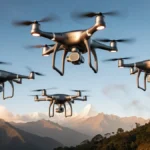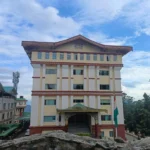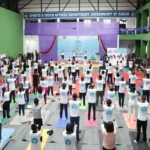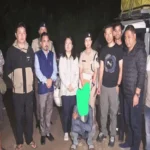Introduction: A Journey Through Time
The Darjeeling Himalayan Railway (DHR), affectionately called the “Toy Train,” has chugged through misty hills and tea gardens since 1881. In 1999, it earned UNESCO World Heritage status for its engineering marvels, such as zigzag loops and the Batasia Loop’s spiral track. This 144-year-old icon is undergoing its most ambitious transformation yet, blending heritage charm with cutting-edge upgrades to boost connectivity, tourism, and sustainability in India’s Northeast 11.
A recent Parliamentary Standing Committee visit on April 17, 2025, highlighted plans to electrify tracks, expand routes, and introduce luxury tourism experiences while preserving the DHR’s vintage steam engines and narrow-gauge tracks. Here’s how these changes could redefine travel in the Himalayas.
1. The UNESCO Legacy: Why Darjeeling’s Toy Train Matters
The DHR isn’t just a train; it’s a lifeline for Darjeeling’s economy and culture. Over 2.2 million passengers each year ride its 88-kilometre route, which climbs from New Jalpaiguri to Darjeeling at a steep 7,000-foot elevation. Its six zigzags and three loops were revolutionary in the 19th century, allowing trains to navigate the Himalayas without tunnels 11.
But age has taken a toll. Diesel engines, introduced in the 2000s, reduced pollution but couldn’t match the efficiency of modern electric systems. Meanwhile, tourism demand has surged, with a 30% spike in visitors since 2022, straining the DHR’s capacity 45.
2. The 2025 Upgrades: Faster, Greener, Smarter
Electrification & the Sevok-Rangpo Link
By March 2026, the Northeast Frontier Railway (NFR) will complete the electrification of its entire network, including the DHR. Hybrid solar-diesel engines will replace older models, cutting emissions by 40% and reducing travel time by 1.5 hours on the Darjeeling route 29.
The more significant game-changer is the Sevok-Rangpo railway, a 44-km line linking West Bengal to Sikkim. Slated for completion in 2026, it will connect to the DHR, allowing tourists to seamlessly travel from Darjeeling to Gangtok in under 4 hours, down from 7 hours by road. The project includes India’s first mountain rail tunnel with an earthquake-resistant design, critical for the seismic Himalayan zone 11.
Tech on the Tracks
- Kavach anti-collision system: Installed on all DHR locomotives after the 2024 pilot success in Northeast freight routes 9.
- GPS-enabled steam engines: Vintage coaches retrofitted with real-time tracking for safety without altering their 19th-century aesthetics 5.
3. Tourism Reimagined: From Nostalgia to Luxury
Vistadome Coaches & Bharat Gaurav Trains
In 2024, NFR added glass-roofed Vistadome coaches to the DHR, offering 360-degree views of Kanchenjunga peaks. These coaches and onboard tea-tasting sessions increased ticket sales by 25% in six months, 45.
The new Bharat Gaurav trains—14-coach rakes themed around Himalayan culture—will launch in 2026. Features include:
- Luxury sleeper cabins modelled on colonial-era tea planters’ bungalows.
- Local cuisine kitchens sourcing ingredients from Darjeeling’s organic farms 5.
Sustainable Tourism Push
- Carbon-neutral certification: DHR stations now run on solar power, and 50 MWp solar plants are planned to be installed across NFR by 2027 9.
- Community guides: 500 locals trained as heritage experts to lead tours, reducing reliance on external operators 4.
4. Challenges: Balancing Growth & Preservation
Overtourism Fears
UNESCO has warned that unchecked visitor growth could damage the DHR’s fragile tracks. To manage crowds, NFR will cap daily rides at 8,000 (up from 6,000) and introduce dynamic pricing: tickets cost 20% more during peak seasons (October–December) 11.
Environmental Trade-Offs
The Sivok-Rangpo line required clearing 200 hectares of forest, sparking protests. NFR’s compromise: planting 300,000 trees along the route and creating wildlife corridors for red pandas and Himalayan black bears 11.
5. What’s Next? The Future of Himalayan Rail Travel
By 2030, NFR plans to:
- Extend the DHR to Bhutan, integrating with its upcoming Trans-Bhutan Trail.
- Launch augmented reality tours where passengers use AR glasses to “see” 19th-century Darjeeling through train windows 11.
Conclusion: A New Golden Age for the Toy Train
The DHR’s upgrades prove that heritage and progress can coexist. General Manager Chetan Shrivastava noted during the MPS’ visit: “This isn’t just about trains—it’s about connecting history to tomorrow’s opportunities.” For travellers, the message is clear: Darjeeling’s iconic ride is entering its most exciting era yet.










